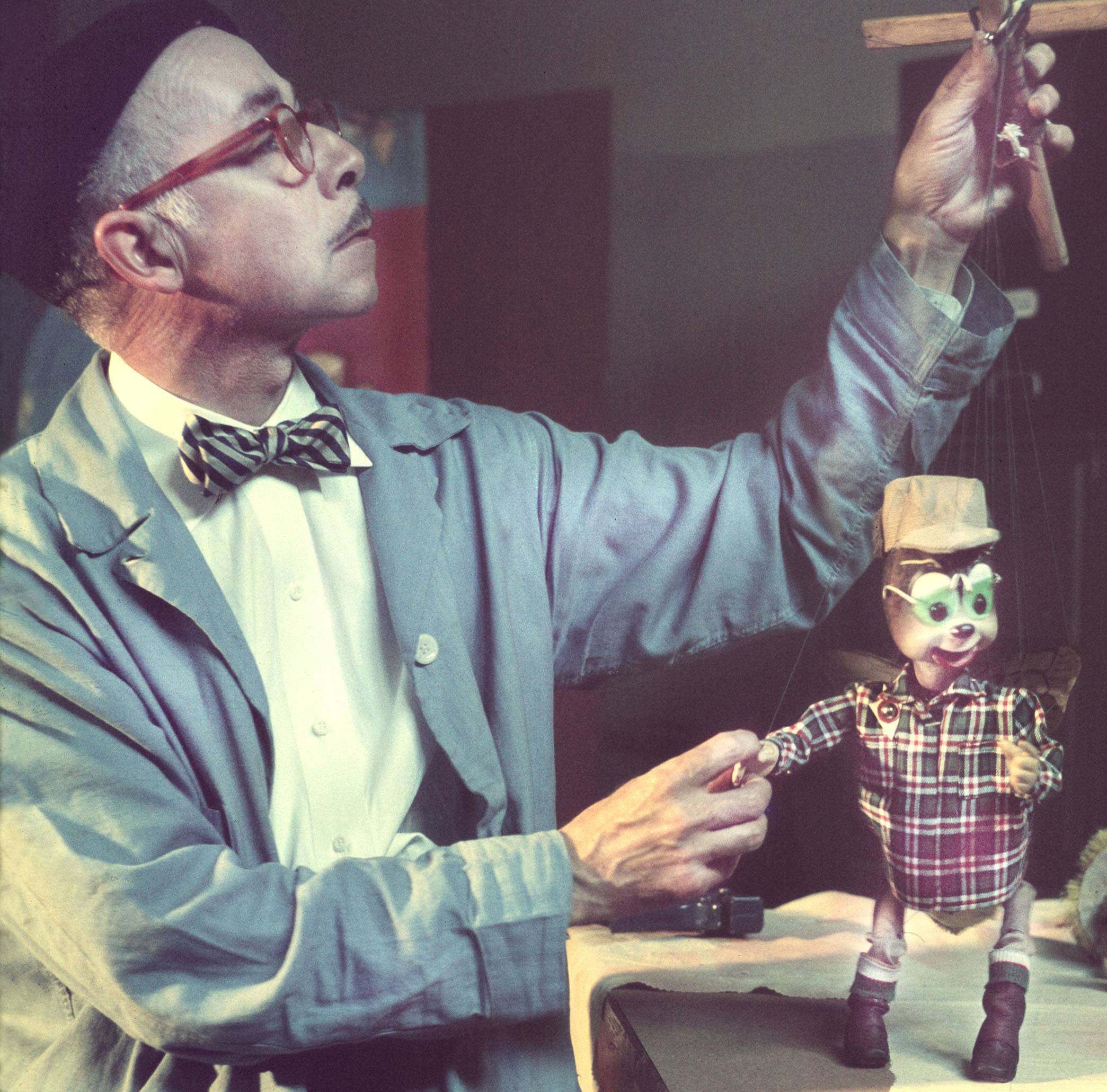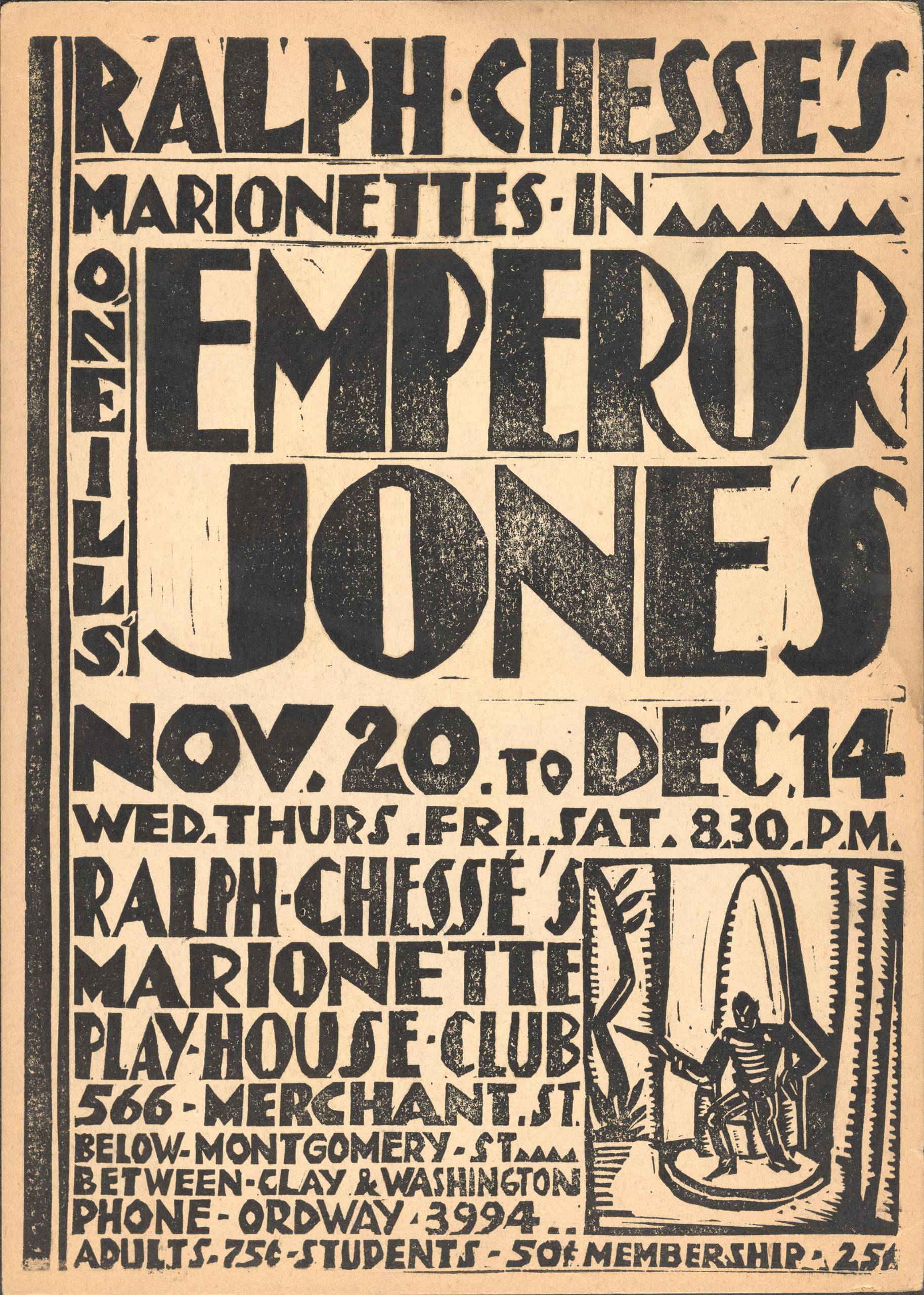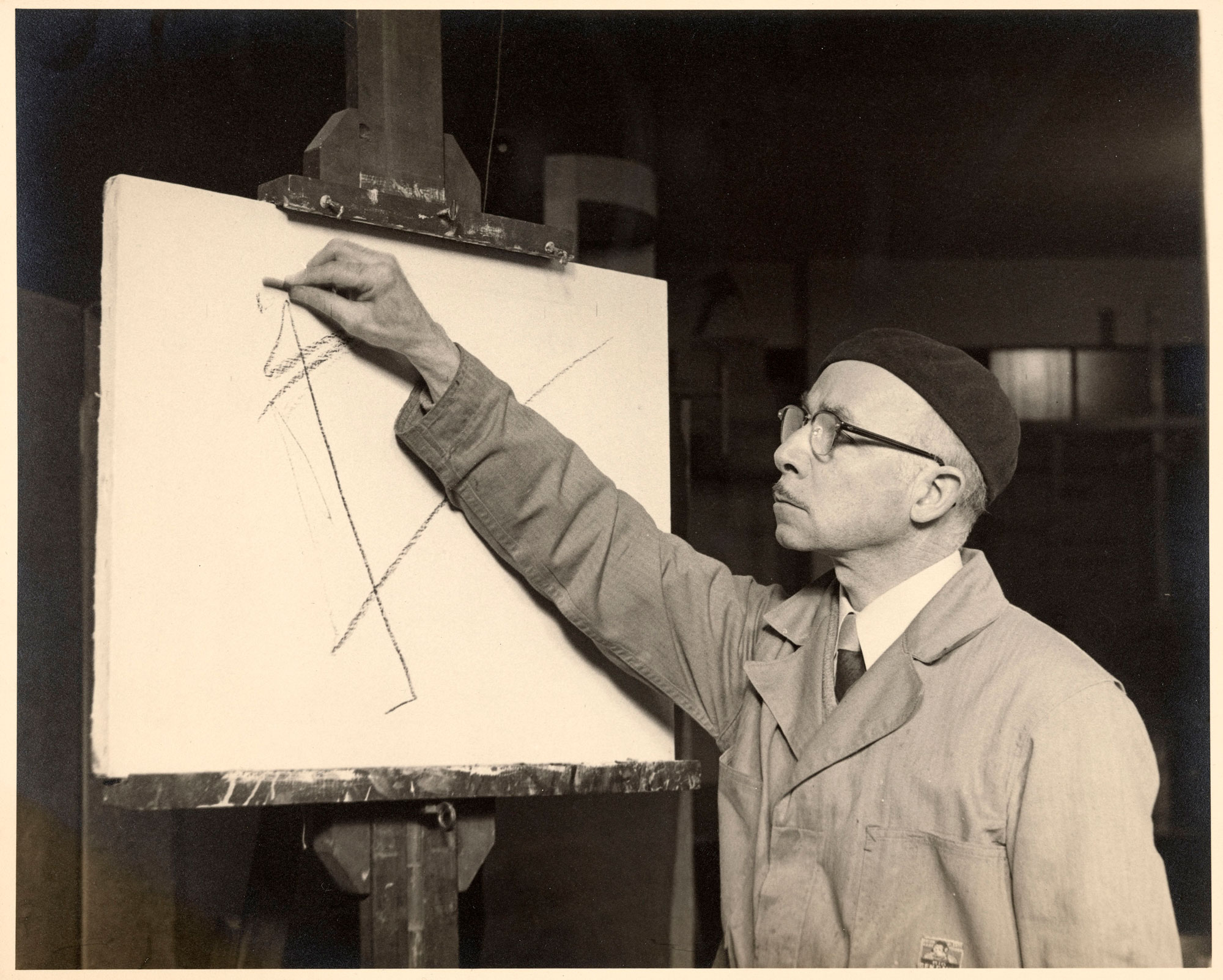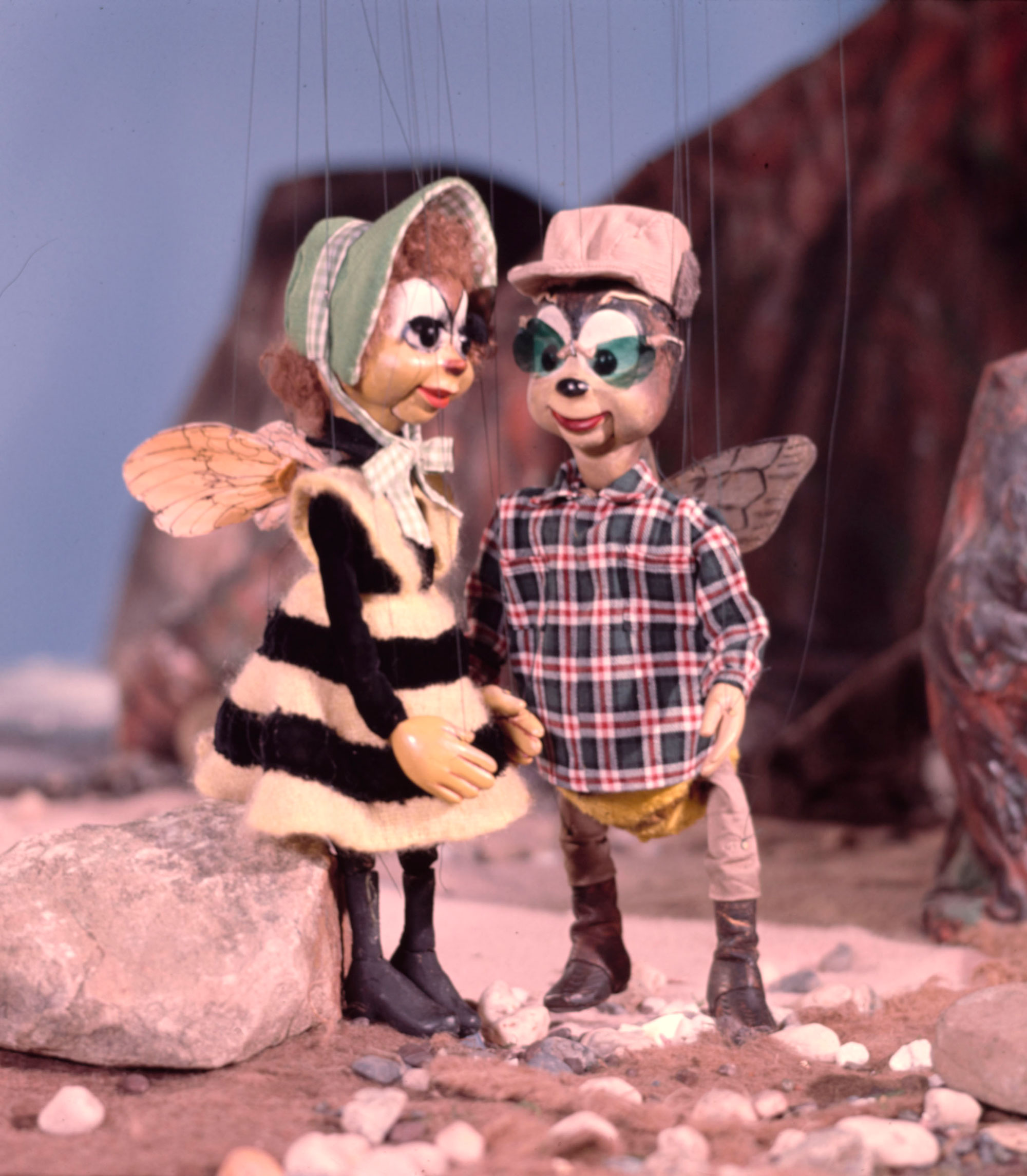
As a library evangelist, it’s rather embarrassing for me to discover an area of San Francisco’s main branch that I have not visited before. Yet I have a feeling I’m not the only one who’s missed this particular corner of the building. Just inside the Larkin Street doors, down the first stairs on the right, is the 1,500-square-foot Jewett Gallery, offering rotating special exhibitions.
For the next three months, that exhibition is well worth seeking out. Ralph Chessé: A San Francisco Century is a delightful and unexpected local history lesson on the prolific output of an artist, actor, puppeteer and creator of the long-running KPIX television show, The Wonderful World of Brother Buzz.
Born in 1900 in New Orleans, Chessé moved to California in the 1920s to pursue the arts, plural. The library’s show, curated by Glen Helfand, contains evidence of this multi-hyphenate life: paintings, drawings, prints, marionettes and video documentation of performances. On top of that are family photographs, a reproduction of Chessé’s Coit Tower mural and a 1966 article that calls the Chessé family “a full-fledged theatrical dynasty.”

It’s a lot, to be sure — Chessé lived to the age of 91. But the challenge of concisely presenting his long career is aided by snippets of QR-code-activated audio from Bruce and Matt Chessé, his son and grandson. Here we get a more personal understanding of Chessé’s racial identity, which was mixed race, a fact that went unacknowledged during his life in San Francisco. The show posits that his two favorite roles, Hamlet and Emperor Jones, were his artistic way of exploring his Black and white heritage.
In a spread of black-and-white photographs capturing Chessé in different costumes and roles, detailing his height (5’ 4 ½”), weight (125 lbs) and membership in the Screen Actors Guild, we get a first hint at his versatility. With a switch of posture and overcoat, he slips between serious detective and shrugging goof. He ponders, he listens, he stands distinguished with a long beard.



